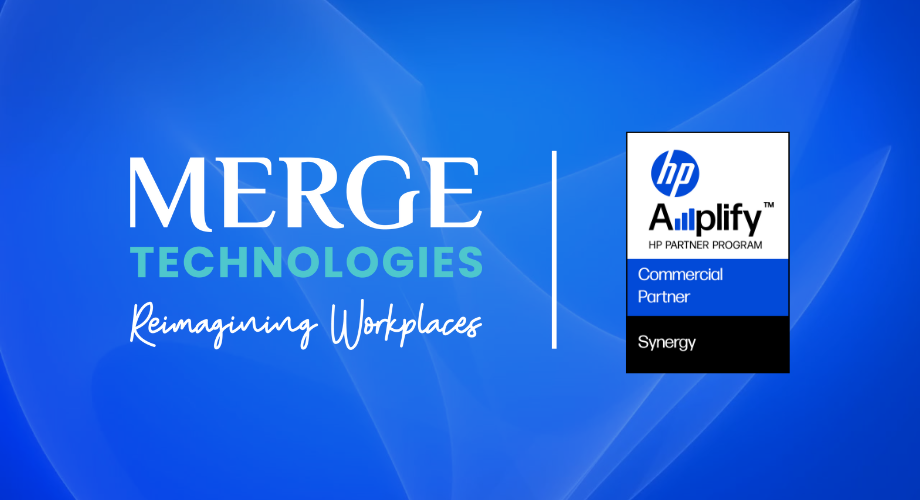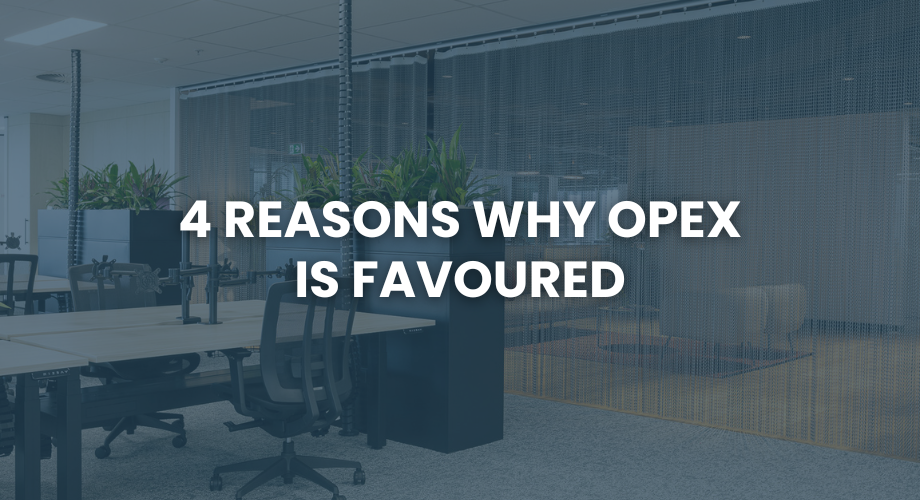As Australia’s restrictions ease and our vaccination rates increase, many organisations are beginning to return to the office. Although this is an exciting time for many, some employees may be hesitant returning to the office during a pandemic, particularly if they feel the conditions are unsafe. Besides careful workspace planning to support social distancing and thorough and frequent cleaning, technology can go a long way to providing a safe and productive environment that employees will want to return to.
.gif)
Many of us are working from home in some capacity and enjoying the benefits that go along with it such as comfort, flexibility and safety. Surveys have shown that the vast majority of workers would like to see these hybrid work models continue after the pandemic.

Hybrid working models have become hugely popular, giving employees the in-person human interaction that only a visit to the office can provide, as well as the flexibility to work from home or remotely. The move to this model of working is driving a trend of office spaces being used primarily for collaboration hubs and important meetings.
1 in 2 employees will go to the office to host a meeting for high engagement activities such as decision-making, problem-solving or relationship-building.
A high level of engagement and collaboration is imperative to business operations, especially when making important decisions. Maintaining this high level is particularly difficult with everyone working remotely, as the nature of these video conference meetings does not foster free flowing information sharing and collaboration in the way a room with at least a few people physically present does. The key is striking the balance between removing physical barriers and enabling better connections between the people in the room and those joining remotely. The right technology will not only enable these better connections, but save valuable time by improving productivity and preventing miscommunication issues that are often the result of the wrong technology, or a complete lack of.
.gif)
A meeting room equipped with quality, fit-for-purpose audio visual technology will give employees the option to host highly effective and collaborative meetings from the office and allow their remote colleagues to participate and interact as if they were in the room. This is essential for maintaining employee satisfaction for remote workers.
Studies have also found that remote employees can be more productive, working up to an hour more every week, particularly during the times they would usually be in transit. So by investing in systems and technology to optimise hybrid working, you’ll not only improve productivity but you’ll also enable the flexibility people are looking for which can lead to an increase in employee retention.
.gif)
There are many ways workplace technology can support your return to work strategy, which involves embracing the hybrid work model, where employees spread their time between working remotely and in the office.
According to a survey by the Sydney Morning Herald, Australia’s 50 largest companies who employ over 1 million people allow their employees to work remotely in some capacity.
Workspace Management, Video Conferencing and Collaboration Technology, Bring Your Own Device (BYOD) or Bring Your Own Meeting (BYOM) Rooms are all important aspects when it comes to designing the workplace of the future.
Workspace Management
.jpg)
Workspace management solutions encompass visitor management and engagement systems, workspace booking and cleaning, hot desk booking and cleaning, video conferencing and collaboration facility booking and cleaning, sound masking and speech privacy, and much more.
The moment employees walk into the office, their experience should be engaging, seamless and cohesive. The right workspace management solutions will provide this experience by enabling automated management of physical and virtual spaces (users can book and plan their visit ahead of time), visual indicators for workspace/resource availability, immediate self-help for end users around the office, and real-time engagement and communication of important messages and updates to both staff and guests across the site. These systems also typically provide monitoring and reporting to better understand space and resource utilisation, and aid workspace optimisation and better space planning.
Paul Clark, Senior VP, EMEA Managing Director, Poly, said:
“Looking forward, organisations must realise that a one-size-fits-all approach is not realistic to enable true collaboration. Instead, experiences must be tailored individually. By putting the spotlight on devices in a transformed workspace, employers can meet the new needs of their workers and help them stay productive.”
For more info about future proofing the workplace to support hybrid work you can read our blog here.
Video Conferencing and Collaboration Technology
Many video conferencing platforms offer a range of features to enhance collaboration and workplace experience. Not all platforms are equal though, and to achieve the best possible outcome businesses need to consider a whole host of different aspects and be prepared to invest.
.gif)
Zoom Rooms - A Powerful Part of the Puzzle
The Zoom Rooms experience helps keep employee’s safety concerns at ease from the very start, with contactless check-in through the Zoom Rooms Kiosk. This can be done through a reception display with a separate or integrated web camera such as the DTEN ME. Temperature checks can also be done remotely, ensuring all COVID safety protocols are adhered to.
In hallways and lobbies, displays can show capacity limits and safety protocols, informing and educating all employees in the office.
Room scheduling displays using Zoom Rooms can show how many people are in a meeting room even before you enter a room, ensuring meetings are safe and social distancing rules are adhered to.
IT Managers and admins can also check CO2 level, air quality and room occupancy on the Zoom dashboard.
You can start meetings using voice commands if your Zoom Rooms are integrated with a voice assistant, avoiding any unnecessary physical contact with room controllers. You can also pair your laptop or mobile device with the Zoom Room to access the meeting controls.

If you’re using Neat hardware, Zoom Rooms uses Neat Symmetry to push individual frames of each participant in a room to create better communication and equilibrium between remote participants and those in the meeting room. For more information on the features of Neat, read our previous blog.
For more information on which video conferencing platform is best, read our previous article.
BYOD & BYOM Rooms
.gif)
Traditional in-room systems may not be the best solution if many different types of video conferencing platforms are frequently used. Many organisations, at least in part, will deploy BYOD or BYOM technology for this reason.
With the right technology, a simple touch, click or voice command is all that’s required to immediately host a video conference meeting in a meeting room using your own device, making for an intuitive and seamless experience. Barco’s range of products are very popular and we have had great success installing these for many of our clients.
.gif)
Claudio Cardile, ANZ Managing Director, Barco, said:
“For Australian businesses to bridge the gap between in-office and remote workers and allow them to be truly productive in meetings, both a change in work culture and technology investments like usability, BYOM and video solutions, will be crucial.
He added that the user experience was key to this:
.gif)
The Workplace of the Future
In this new world, automated workspace management paired with seamless and high-quality video conferencing and collaboration technology is fundamental to business continuity, teamwork and innovation. Hybrid work is here to stay and to remain competitive in the marketplace and appealing to potential new hires, businesses must embrace the new way of working and invest. Regardless of location (office or elsewhere), employees that have access to the right tools and technology will be happier, healthier and more productive, ultimately leading to future growth and prosperity.
For more information on how workplace technology can support your return to the office, reach out to the experts here at Merge.



